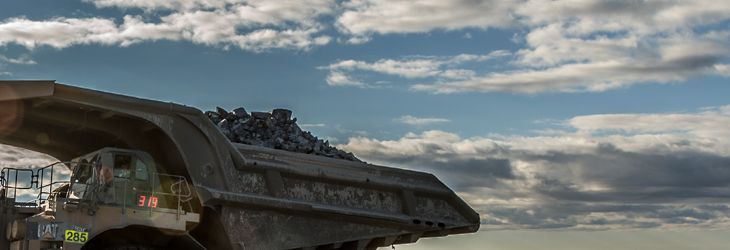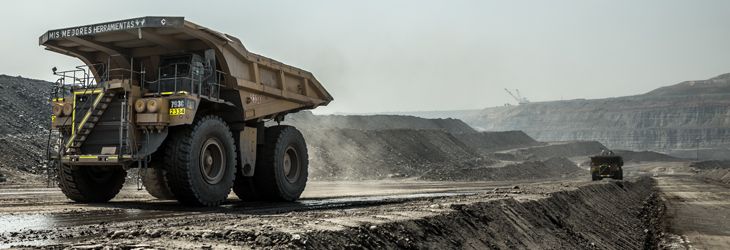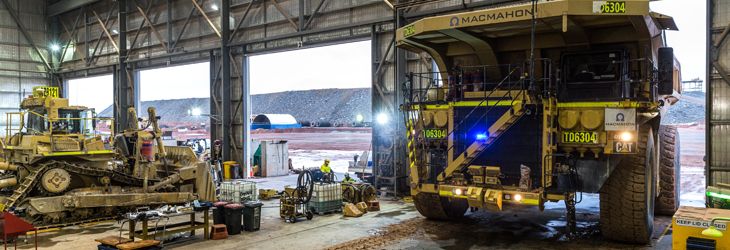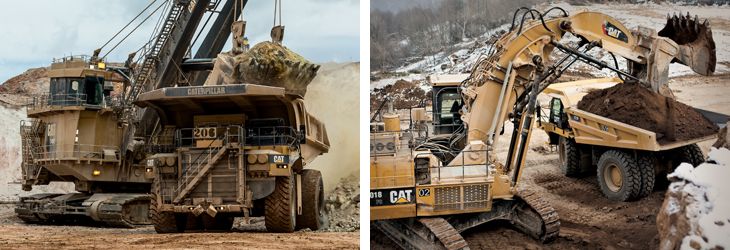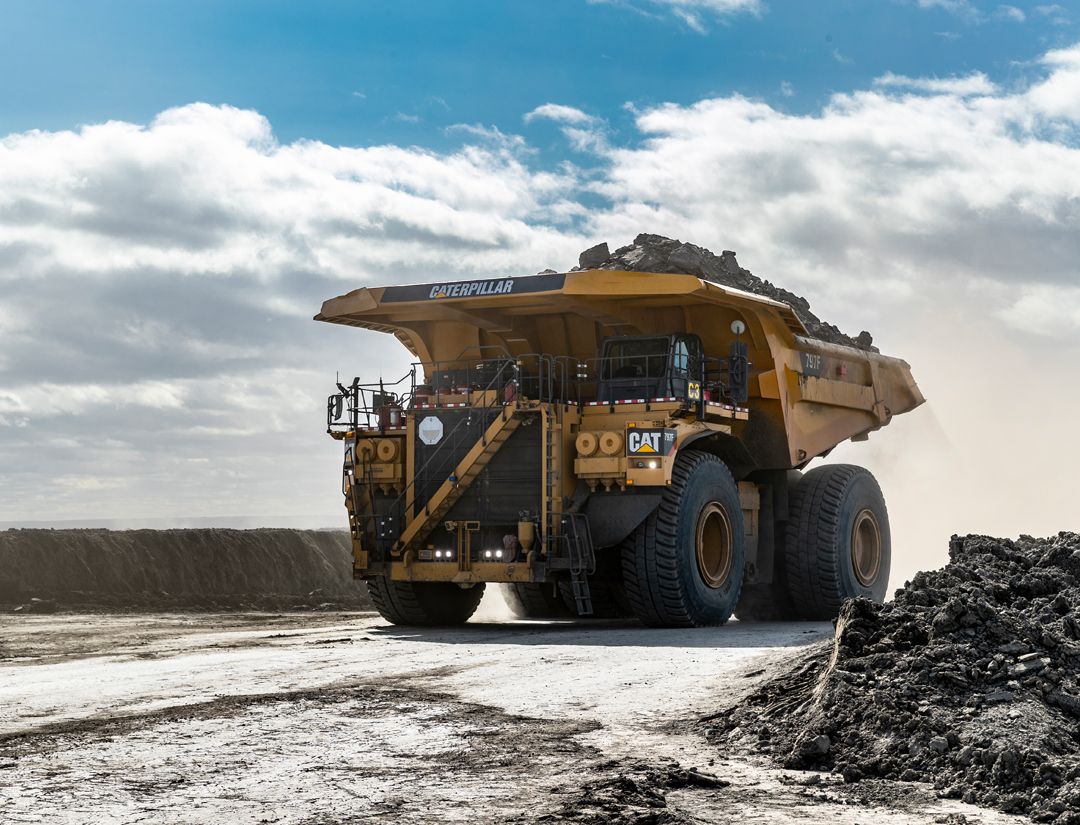If you already have an existing account with another Cat App, you can use the same account to sign in here.
One Account. All of Cat.
Your Caterpillar account is the single account you use to log in to select services and applications we offer. Shop for parts and machines online, manage your fleet, go mobile, and more.
Account Information
Site Settings
Security
Mining Truck Considerations: Is Bigger Always Better?
By Caterpillar | Published March 31, 2022
When it comes to hauling ore, conventional wisdom would indicate that buying a bigger truck will result in greater productivity. While it’s true that more is being hauled with every truckload, there are a number of considerations that may lead to the conclusion that that bigger isn’t necessarily better.
“What we’ve found is that it’s not always an easy decision whether to stay with the truck size you have or go to a larger size,” says Mark Richards, Caterpillar large mining truck commercial manager. “There are a lot of trade-offs.”
The benefits that larger trucks bring to the operation may be offset by negative impacts on other areas. “You have to consider the complete mining enterprise when evaluating a change like this one,” says Richards. “You have to think about the costs along with the benefits.”
The truck experts at Caterpillar shared this list of areas to consider:
HAUL ROADS AND WORKING AREAS
“If you have to expand the width of your roads to bring on a larger truck, you have to consider all the ramifications of that change,” says Richards. “And some of those ramifications can be costly.”
First you have to do the physical work of making the roads larger and wider, he explained. And then you have to maintain them. Wider roads may require the purchase of more — and possibly larger — motor graders. In addition, larger trucks may be less maneuverable, requiring a larger working area for loading and dumping.
In some cases, these heavier trucks may require a higher standard of road bed. “You have to look at your underfoot conditions as they relate to ground pressures,” says Richards. Larger trucks have about the same PSI from the tires, but their overall weight is higher, so the ability of the ground to carry that weight becomes an issue.
“Even though all trucks are designed to minimize ground pressure, there’s just no substitute to having somewhat of a smaller, more nimble truck. If you’re at the bottom of a pit, and you have poor ground conditions or even just a tight space, it may be more beneficial to run with a smaller truck.”

Haul Distance
Another consideration is the length of the haul and the percent of time a truck spends loading vs. hauling. If hauls are longer, then switching to a larger truck will mean more material is being carried along that longer distance — and the costs come down. With shorter distances, smaller trucks can compete as the lower-cost option.
Pit Dimensions
Another consideration is the impact on overall pit dimensions. “In a really deep pit application, it may not make sense to go to a larger truck because of how much material you will have to push back in order to get to the width that’s required,” says Richards. The wider the roads, the lower the pit slope or angle. That means there must be more overburden stripped in order to get to the ore.
“There is a concept we call the ultimate pit cutoff,” explains John Ingle, Caterpillar large mining truck performance manager. “Break-even grade equates the cost of mining, milling and refining to the value of the block in terms of the recovered material and the selling price. You have to consider how much extra waste removal is needed to mine the ore.”
Maintenance
Most mines design their maintenance shops and wash bays around specific pieces of equipment, from the width of the bay doors to the height of the overall structure. Any change in equipment, especially when it’s larger, is going to have an impact on that infrastructure.
“Shops are expensive,” Ingle points out. “So once you’ve built one, you want to keep it.” Expanding and reconfiguring the shops for larger equipment requires a major investment. Larger trucks may also require the purchase of new cranes or specialized tools.

People
Bringing on any new piece of equipment is going to have an impact on employees. There can be significant costs associated with training them to work with new machines.
“You have to keep in mind the people side of the business,” says Richards. “For example, if your operators are used to driving a smaller truck, and your technicians are accustomed to maintaining it, it can be a big change to go to a new size. And it will take time and money to get them up to speed and working productively.”
Overall Truck Operating Costs
While it’s true that larger trucks deliver higher productivity and overall lower cost per ton, it also costs more to operate them in terms of fuel usage, maintenance, etc. “If the mine is not optimized to use these trucks to their full efficiency, they can add costs rather than reduce them,” says Ingle.
Loading Tools
The shovel is the major portion of a mine’s fleet investment. Mines choose the loading tool to meet mine parameters and production needs — and then trucks are matched accordingly.
Each shovel has a maximum output capacity and can only serve a maximum number of trucks. A larger truck can realize more shovel production with fewer units. As a result, high production costs less.
“But if the loading tool is not increased in size to match a change to larger trucks, the cost per ton for that loading tool will stay the same” Ingle points out. “The cost of the hauler is affected if the large truck must wait to be loaded. You’re paying money for it just to sit there.”
Also consider the impact of mixed fleets on the shovel. Different truck sizes impair the ability to load all the trucks with their optimal payload, especially when they are being loaded by a one-size shovel fleet. This creates problems such as out-of-range loading and improper load distribution in the truck.

Mine Life

